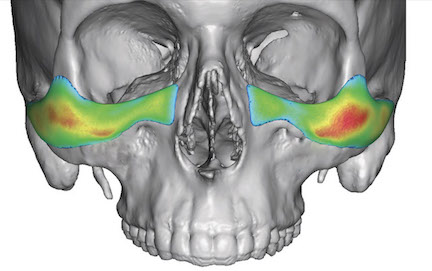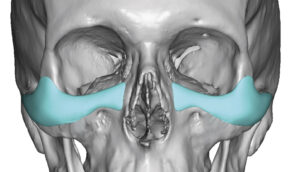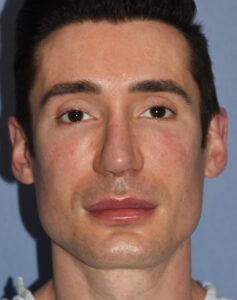Background: While cheek implant augmentation has been performed for decades there is no uniform change that all patients seek. While standard cheek implant styles and sizes exist the effects they create are uniformly desired by all. Understanding the exact dimensional changes to the cheek will determine if standard implants, modified standard implants or custom cheek implants are needed to achieve the patient’s desired aesthetic result.
Most men who seek cheek augmentation are after a different effect than that of what women have desired in the past. Rather than an anterior cheek fullness, which can feminize a man’s face because it creates a rounded effect, a more skeletal look or line of augmentation is desired which is more masculine. The key here is to follow the natural skeletal line of the cheek.
There are four zones to consider in cheek augmentation, the more central malar and submalar areas, the anterior infraorbital extension and the posterior arch extension. What is clear is that in those patients who seek a high cheekbone look must generally avoid the submalar region. The infraorbital extension is only necessary if the patient has undereye hollows and is the key consideration for when the lower eyelid incisional placement technique is needed.
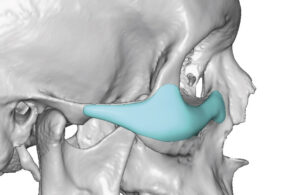


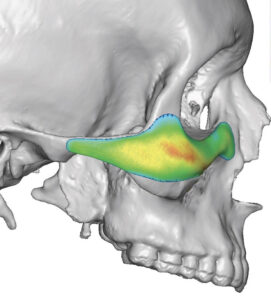
Case Highlights:
1) Males often seek a higher cheekbone look that more closely parallels the natural skeletal line of the midface.
2) The infraorbital-malar cheek implant style is what creates the high cheekbone look as it covers this linear line of midfacial bone.
3) The key thickness to be cautious of in the infraorbital-malar style is where it turns the corner from the eye to the side of the cheek.
Dr. Barry Eppley
Indianapolis, Indiana

